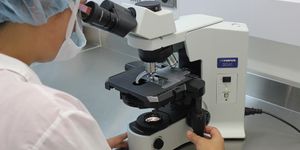Technology Differentiates Between Two Critical Neurodegenerative Diseases
New technology developed by researchers at The University of Texas Health Science Center at Houston would be able to differentiate between two progressive neurodegenerative diseases—Parkinsons disease (PD) and multiple system atrophy (MSA).
The technology is called Protein Misfolding Cyclic Amplification (PMCA) and results of the study were published in Nature.
Learn more about the etiology of Parkinson disease:
Generally speaking it is difficult to distinguish between systems of PD versus MSA—this is because these diseases both have same early signs such as tremors, uncontrollable movements and impaired speech. However, these diseases despite similarities in clinical symptoms they do progress differently and as a result need different treatment plans.
"It is important for physicians to have an objective way to differentiate between PD and MSA in order to provide patients with the best care. Currently, the only way to differentiate them is to wait and see how the disease progresses, with MSA advancing much more rapidly than PD," said Claudio Soto, PhD, a professor in the Department of Neurology at McGovern Medical School at UTHealth and senior author of the Nature paper. "By the time people show progressed symptoms of MSA, a substantial amount of brain cells are already damaged or dead, and they can't be brought back. It has been difficult to develop treatment for both diseases because of the high rates of misdiagnosis, so we needed to find a way to distinguish between the two at the onset of early symptoms."
Learn more about Multiple System Atrophy (MSA):
Both neurological diseases involve deposits of a protein known as alpha-synuclein (aSyn) found in the nervous system. The protein can become corrupted and thus start changing shape in a process known as ‘misfolding’—as a result the misfolded proteins start to aggregate and surround healthy nerve cells that begin to impair normal brain functioning.
"The formation of these misfolded clumps will happen for many years, even decades, before enough damage is caused for a person to start showing signs of motor impairment," said Soto, who is also the director of the George and Cynthia Mitchell Center for Research in Alzheimer's Disease and Related Brain Disorders.
Using PMCA technology, researchers can target misfolded aSyn aggregates for a better diagnosis of PD versus MSA. The latest research observes that aSyn-PMCA can successfully distinguish between PD and MSA with an overall sensitivity of 95.4%.
"Our latest research shows that the aSyn aggregates of PD and MSA have different properties, so by amplifying the abnormal aggregates we can detect with high efficiency which disease the patient has," Soto said. "This has huge implications both for accurate diagnosis and clinical care of the patient, and the development of new specific treatments for both diseases."
Source: Science Daily









